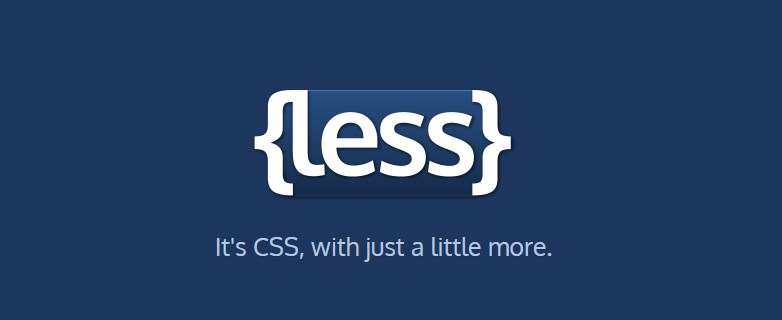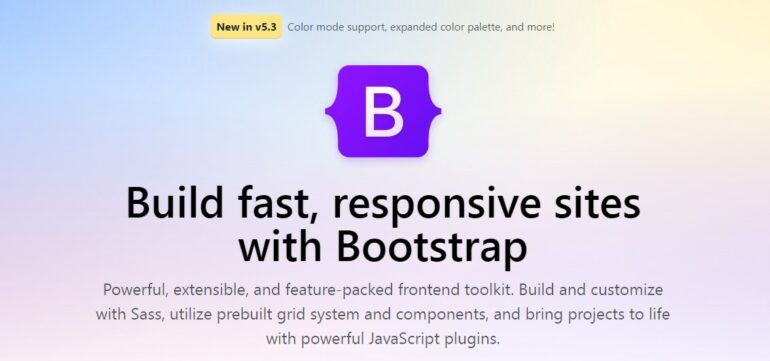Bootstrap, commonly referred to as Twitter Bootstrap, is a widely-recognized term in the realm of web design and development. The contemporary digital landscape calls for websites that are flexible, responsive, and maintain consistent performance across a plethora of devices, platforms, and screen resolutions.
This framework effectively responds to this requirement, offering web designers a user-friendly framework to craft websites and web applications, ranging from the most basic structures to sophisticated platforms.
Target Audience of This Guide
The focal point of this guide is ‘Compiling LESS in Bootstrap.’ It is designed to offer substantial value to those who are well-versed in the framework’s directory structure or have hands-on experience working with it.
Nevertheless, the guide’s content has been meticulously simplified and divided into easy-to-follow steps to ensure its accessibility to novices in the field. This ensures that anyone willing to learn has the opportunity to do so.
Scope Limitation of This Guide
This guide will consciously steer clear of the following topics:
- Creating a website leveraging Bootstrap;
- Application of LESS;
- Behind-the-scenes languages that fuel Bootstrap.
To dispel any existing misconceptions, it’s essential to highlight that the framework doesn’t rely on any ground-breaking or novel technology. Instead, it harnesses the power of tried-and-tested web design languages like HTML5, CSS3, JavaScript, jQuery, along with CSS preprocessors such as LESS and SASS.
Delving into Bootstrap’s Core Components
This guide provides a succinct overview of the framework’s critical components:
- HTML5: This lays the foundation of data structure in Bootstrap;
- CSS3: Responsible for dictating the data presented within the established structure;
- JavaScript and jQuery: These govern behaviors, logic, and contribute to dynamic HTML generation;
- CSS Preprocessors (LESS and SASS): An indispensable part of Bootstrap, they could be likened to Dynamic CSS due to their capability to manage CSS or style elements dynamically, quite similar to JavaScript variables.
Demystifying LESS
If the quest is for a CSS that is entirely maintainable, reusable, flexible, and modular, then LESS emerges as the ideal solution. Being a CSS preprocessor, LESS offers the ability to utilize variables, mixins, parameters, and functions to author your CSS.

Once this step is accomplished, the subsequent task involves merely compiling your LESS to derive the CSS, thereby rendering the process notably efficient and intriguing.
Understanding the Compilation of LESS
The process of converting LESS into CSS is an essential aspect of leveraging the power of LESS in your development workflow. This transformation requires a specific tool called a compiler. In the vast landscape of development tools, there are several compilers available that can perform this task. However, choosing a suitable one might require some consideration of various factors such as ease of use, compatibility, additional features, and more.
One such compiler that stands out in the crowd is Prepros. This compiler has gained considerable recognition and appreciation within the developer community for its intuitive and user-friendly interface. Prepros makes the task of compiling LESS into CSS a smooth and efficient process. It allows for real-time compilation, meaning that as you save your LESS files, Prepros automatically compiles them into CSS.
Furthermore, Prepros is not just limited to LESS; it supports a range of other preprocessor languages, including SASS, Compass, Stylus, and Jade. This broad compatibility makes Prepros a versatile tool that can easily fit into diverse development workflows.
The compiler also provides features like live browser refresh, error notifications, and network previews. These capabilities enhance the development experience, enabling developers to focus more on coding and less on manual tasks. Thus, using Prepros can significantly streamline your workflow when working with LESS and Bootstrap, making it a compelling choice for developers.
How to Integrate LESS with Bootstrap
Regardless of whether you’re a newcomer to Bootstrap or an experienced player, the following steps will serve as a practical guide to integrating LESS with Bootstrap effectively:
- Start by downloading the ‘Bootstrap Source’ code;
- Proceed to extract and open the downloaded folder;
- Copy the less folder and paste it within the dist folder;
- If desired, the dist folder can be renamed.
Next, create an index.html page and incorporate the requisite code:
<!DOCTYPE html>
<html lang=”en”>
<head>
<meta charset=”utf-8″>
<meta http-equiv=”X-UA-Compatible” content=”IE=edge”>
<meta name=”viewport” content=”width=device-width, initial-scale=1″>
<title>Bootstrap 101 Template</title>
<!– Bootstrap –>
<link href=”css/bootstrap.min.css” rel=”stylesheet”>
<!– HTML5 shim and Respond.js for IE8 support of HTML5 elements and media queries –>
<!– WARNING: Respond.js doesn’t work if you view the page via file:// –>
<!–[if lt IE 9]>
<script src=”https://oss.maxcdn.com/html5shiv/3.7.2/html5shiv.min.js”></script>
<script src=”https://oss.maxcdn.com/respond/1.4.2/respond.min.js”></script>
<![endif]–>
</head>
<body>
<h1>Hello, world!</h1>
<!– jQuery (necessary for Bootstrap’s JavaScript plugins) –>
<script src=”https://ajax.googleapis.com/ajax/libs/jquery/1.11.2/jquery.min.js”></script>
<!– Include all compiled plugins (below), or include individual files as needed –>
<script src=”js/bootstrap.min.js”></script>
</body>
</html>- Launch the installed Prepros and drag your dist folder into it;
- Choose the bootstrap.less file inside the less folder to set the compile path.
Once done, make changes and save your LESS file, then launch your index.html file in a browser to view the changes.
The Flexibility of LESS in Bootstrap
LESS offers a series of powerful features that amplify the flexibility and versatility of CSS. Some of these unique features include variables, mixins, functions, and operations. Using variables, you can define a value once and use it in multiple places in your stylesheet. Mixins allow you to group CSS declarations for reuse throughout the site.
Functions and operations provide dynamic manipulation of values. The modular nature of LESS is particularly beneficial when used with a versatile framework like Bootstrap. Together, they deliver a powerful tool for designing responsive, performant, and aesthetically pleasing web applications.
Steps to Integrate LESS in Bootstrap Projects
The integration of LESS in Bootstrap is a straightforward process that enhances your development efficiency. Here’s how you can get started:
- Download the source code of the framework;
- Extract the downloaded folder. You will find a ‘less’ folder inside;
- Copy this ‘less’ folder and paste it into the ‘dist’ folder within your project directory;
- Create an ‘index.html’ file and incorporate the necessary code, linking to the CSS file that will be generated when the LESS file is compiled;
- Use a compiler like Prepros to compile your LESS code into CSS.
The resulting CSS file will reflect all the styles defined in your LESS file, ready for deployment.
Enhancing Workflow with LESS and Bootstrap
The seamless integration of LESS with Bootstrap offers numerous benefits that can significantly enhance your development workflow. For instance, the use of variables in LESS can help maintain consistency across your website, such as colors, fonts, or padding.
Furthermore, with the framework’s grid system and LESS, you can efficiently create responsive layouts that fit all screen sizes.
The dynamic nature of LESS allows for conditional styling and color manipulation that would otherwise require additional JavaScript code. With Bootstrap’s components and LESS’s power, developers can create complex UIs with less code, making the development process more efficient.
Customizing Bootstrap with LESS
One of the significant advantages of using LESS with Bootstrap is the customization it allows. The framework’s source code is written in LESS, and each component’s styles are stored in separate LESS files. This structure allows developers to easily modify or override the default styles.
To customize Bootstrap with LESS, you want to
- Identify the Bootstrap component you want to customize;
- Locate the corresponding LESS file in the framework’s source code;
- Modify the LESS code to fit your specific design requirements;
- Compile the LESS code into CSS.
By enabling this level of customization, LESS enhances the potential of Bootstrap, giving developers full control over the look and feel of their web applications.
Summary
Following this guide simplifies the process of mastering Bootstrap using LESS significantly. Should you encounter any doubts or require advanced training in the framework, do reach out for assistance.
